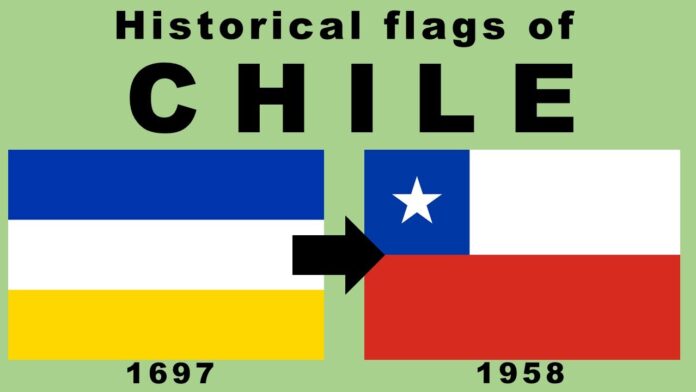Introduction to the Chile Flag
The Chile Flag is more than just a piece of fabric; it’s a vibrant symbol steeped in history and cultural significance. With its striking blue, white, and red colors, the flag tells a story that spans centuries. From the early days of Spanish colonization to the fervor of independence movements, each alteration reflects Chile’s evolving identity. This journey through time offers insights into how flags can embody national pride and collective memory.
Join us as we explore the fascinating evolution of the Chile Flag—its origins, influences, controversies, and current relevance. Discover how this emblem serves not only as a representation of nationhood but also as an enduring legacy that resonates with every Chilean today.
The First Flags of Chile: From Spanish Colonization to Independence
The early flags of Chile tell a rich story, beginning during Spanish colonization in the 16th century. The first banners were often variations of the Spanish flag, representing royal authority and power over newly acquired territories.
As time passed and resistance grew, these symbols evolved. In the early 19th century, patriotic leaders sought to establish a distinct identity for Chile. They introduced new designs that reflected national pride and aspirations for independence.
One notable example was the “Flag of the First National Assembly,” adopted in 1812. It featured stripes inspired by revolutionary movements across Latin America.
These initial flags represented more than just cloth; they embodied hope and unity among those yearning for freedom from colonial rule. Each design change marked a step toward defining what it meant to be Chilean amidst external influences and internal struggles.
The Influence of European Flags on the Chile Flag
The Chile Flag’s design reflects a rich tapestry of European influences. When Spanish colonizers established their presence in the 16th century, they brought with them various heraldic symbols and colors that would later resonate in Chilean identity.
The blue, white, and red palette mirrors many flags across Europe. The blue represents the sky and ocean, while white symbolizes peace and purity. Red stands for bloodshed during the fight for independence. These color choices echo themes found in French and American flags.
Moreover, the rectangular shape of the flag is reminiscent of other national standards from Europe. This commonality not only showcases shared ideals but also hints at historical connections forged through exploration and conquest.
These European elements were woven into a uniquely Chilean narrative as the nation sought to establish its own identity amidst colonial rule. The fusion highlights how global influences can unite diverse cultures under one banner.
Changes in the Design and Symbolism of the Flag Throughout History
The Chile Flag has undergone several transformations since its inception. Initially, it featured elements that reflected the Spanish colonial influence. Over time, these designs evolved to represent a burgeoning sense of national identity.
In 1817, during the fight for independence, a new flag emerged. This design incorporated blue and white stripes along with a red backdrop. Each color symbolized key aspects of Chilean culture: valor, purity, and the sky.
As political sentiments shifted throughout the years, so did the flag’s symbolism. The current version was adopted in 1843 and features a star that represents guidance and unity among Chileans.
These changes mirror significant historical moments in Chile’s journey towards sovereignty. The evolution of the flag not only reflects aesthetic preferences but also encapsulates deep-rooted values held by its people across generations.
Controversies and Modifications of the Chile Flag
The Chile Flag has not been without its share of controversies. Throughout history, various groups have debated its symbolism and design. Some argue that the flag’s colors fail to represent all regions of Chile equally.
In recent years, discussions about inclusivity have gained traction. Activists suggest incorporating elements that reflect indigenous cultures and histories. This push for modification aims to make the flag a symbol for all Chileans, not just a select few.
Moreover, during political upheavals, alternate flags emerged as symbols of resistance or change. These variations often sparked heated debates over national identity and unity.
Such conversations reveal more than aesthetics; they delve into collective memory and representation in society. As opinions clash over what the flag should embody, it continues to be a focal point for national pride and introspection.
Modern-day Usage and Significance of the Flag
The Chile flag is a vibrant symbol of national pride today. It waves over government buildings, schools, and homes across the country. Every year, during celebrations like Independence Day, it takes center stage.
Chilean citizens display the flag with immense respect. It represents their history and struggles for freedom. People wear clothing adorned with the flag’s colors to express patriotism during public events and sports games.
The Chilean diaspora also embraces this symbol abroad. Communities worldwide use the flag to connect with their roots while celebrating their culture.
Social media has become another platform for showcasing love for the Chile flag. Hashtags ignite conversations about national identity among younger generations eager to explore their heritage in a modern context.
Conclusion: The Enduring Legacy of the Chile Flag
The Chile Flag stands as a powerful symbol of national identity and pride. Its design reflects not only the rich history of Chile but also its aspirations for freedom and unity. From the early flags used during Spanish colonization to the bold colors representing independence, each iteration tells a story.
Over time, it has evolved alongside political changes and social movements, adapting to the needs of its people while honoring their past. The flag serves as a reminder of struggles faced and victories won, embodying resilience.
In modern times, it continues to inspire unity among Chileans both at home and abroad. Whether waved at celebratory events or displayed in homes, it evokes feelings of patriotism that transcend generations.
The legacy of the Chile Flag is enduring. It remains an emblem rich with meaning—a visual narrative woven into the fabric of a nation defined by its history and culture.

